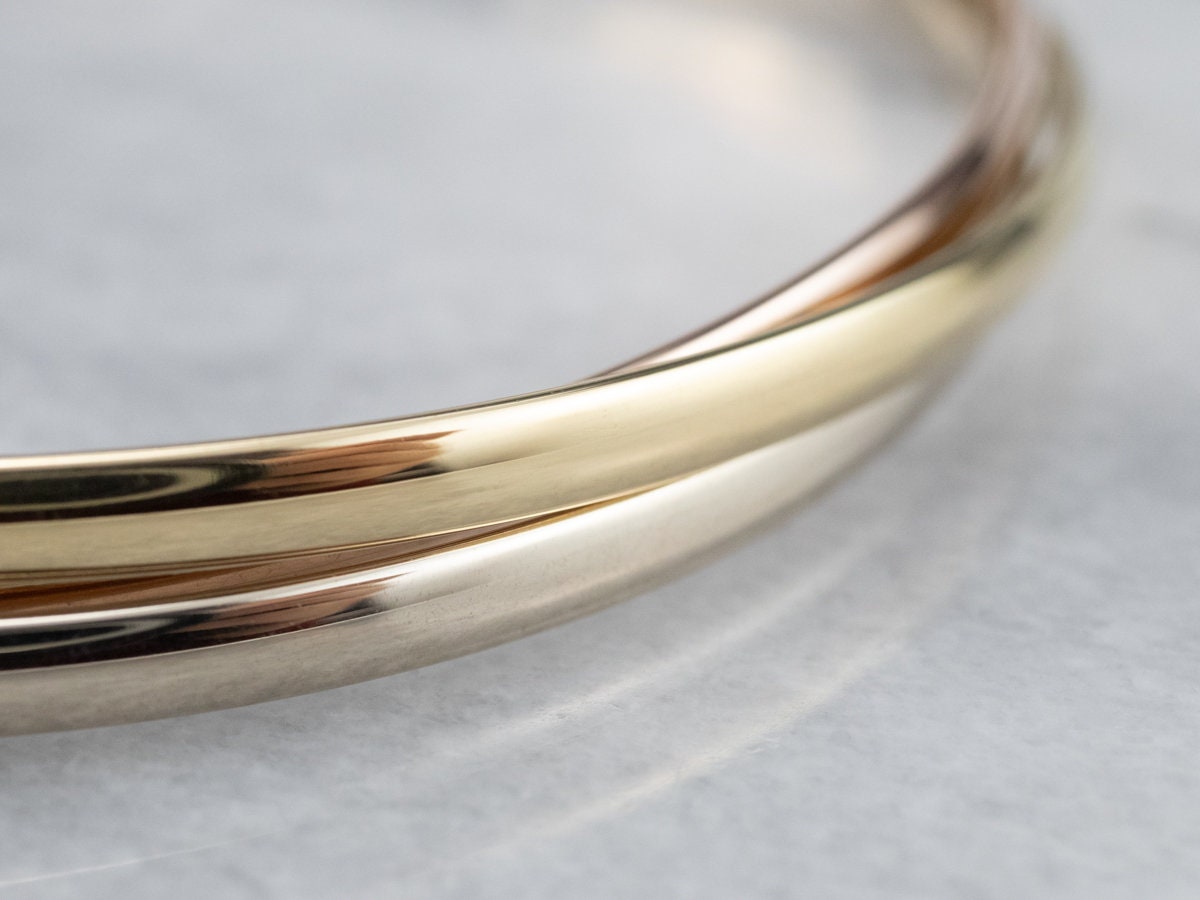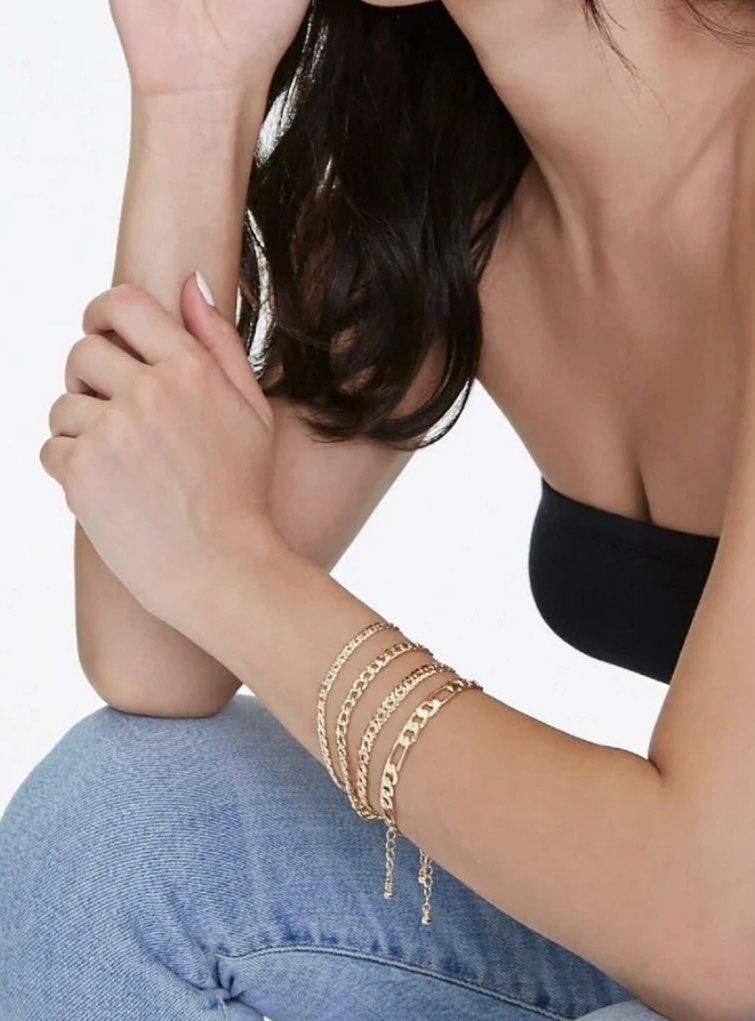
Introduction:
When it comes to selecting a gold bracelet, one of the key decisions to make is choosing between white gold and yellow gold. Both options have their unique charm and visual appeal, but understanding the distinctions between the two can help you make an informed choice. In this comprehensive guide, we will explore the differences between white gold and yellow gold bracelets, considering their composition, appearance, maintenance, and style versatility. The article is divided into four parts, each containing two levels of content, to provide a thorough understanding of the topic and assist you in selecting the ideal gold bracelet that best suits your preferences and style.
Part 1: Composition and Characteristics
Level 1: Understanding White Gold
White gold is an alloy composed of pure gold mixed with white metals such as silver, palladium, or nickel. Consider the following characteristics:
- Color and Appearance: White gold has a silvery-white hue that resembles platinum or sterling silver. The bright white shade is achieved through a rhodium plating process, which enhances its luster and appearance.
- Durability and Strength: The addition of other metals to gold increases its strength and durability. White gold is known for its resistance to scratches and tarnish, making it a suitable option for everyday wear.
Level 2: Exploring Yellow Gold
Yellow gold is the purest form of gold, composed solely of the gold element. Consider the following characteristics:
- Color and Appearance: Yellow gold possesses a warm, rich, and classic golden color. It is highly associated with traditional and timeless jewelry aesthetics.
- Malleability and Softness: Pure gold is a soft metal, which makes yellow gold bracelets susceptible to scratches and dents. To enhance durability, yellow gold is often alloyed with other metals like copper or zinc.
Part 2: Style and Aesthetic Considerations
Level 1: Versatility of White Gold
White gold bracelets offer versatility in terms of style and pairing options. Consider the following factors:
- Contemporary Appeal: White gold’s bright and modern appearance complements a wide range of clothing styles, making it suitable for both casual and formal occasions.
- Gemstone Compatibility: White gold serves as an excellent backdrop for gemstones, allowing them to stand out and sparkle. It seamlessly pairs with diamonds, colored gemstones, and other precious stones.
Level 2: Classic Elegance of Yellow Gold
Yellow gold bracelets are known for their classic and timeless appeal. Consider the following factors:
- Traditional Aesthetics: Yellow gold’s warm hue imparts a sense of tradition and heritage, making it an ideal choice for those seeking a classic and sophisticated look.
- Warmth and Radiance: Yellow gold’s natural color creates a warm and radiant glow on the skin, adding a touch of luxury and elegance to any ensemble.
Part 3: Maintenance and Care
Level 1: White Gold Maintenance
White gold bracelets require regular maintenance to preserve their appearance and luster. Consider the following care tips:
- Rhodium Plating: Over time, the rhodium plating on white gold may wear off, revealing the natural color. To maintain its bright white appearance, periodic re-plating is recommended.
- Cleaning: Clean white gold bracelets regularly with warm soapy water and a soft brush to remove dirt and debris. Avoid using harsh chemicals or abrasive cleaners that may damage the metal or gemstones.
Level 2: Yellow Gold Maintenance
Yellow gold bracelets also require care to maintain their beauty and shine. Consider the following care tips:
- Polishing: Polish yellow gold bracelets regularly with a soft cloth to maintain their luster and remove any surface scratches. Avoid using abrasive materials that may scratch or damage the metal.
- Cleaning: Clean yellow gold bracelets with warm soapy water and a soft brush to remove dirt and oils. Rinse thoroughly and pat dry with a clean cloth.
Part 4: Personal Style Considerations
Level 1: Matching Personal Preferences
The choice between white gold and yellow gold ultimately depends on personal preference and individual style. Consider the following factors:
- Skin Tone: Consider your skin tone when selecting a gold bracelet. White gold tends to complement cooler skin tones, while yellow gold complements warmer skin tones.
- Fashion Preferences: Take into account your preferred fashion aesthetic. White gold may be more suited to contemporary and minimalist styles, while yellow gold may align with classic or bohemian-inspired looks.
Level 2: Combining White and Yellow Gold
Don’t limit yourself to just one type of gold; consider incorporating both white and yellow gold into your bracelet collection. Try these styling ideas:
- Mixed Metal Stacking: Create a trendy and eclectic look by stacking white gold and yellow gold bracelets together. The combination of the two metals adds visual interest and allows for versatile styling options.
- Two-Tone Designs: Embrace the beauty of both white and yellow gold by selecting a two-tone bracelet that incorporates elements of both metals. These designs offer a harmonious blend of classic and contemporary aesthetics.
Conclusion:
Choosing between white gold and yellow gold bracelets involves considering their composition, appearance, maintenance, and personal style preferences. White gold offers a modern and versatile appeal, with compatibility for various gemstones and contemporary fashion choices. Alternatively, yellow gold exudes timeless elegance and traditional aesthetics, creating a warm and luxurious glow. Understanding the characteristics of each metal, as well as their maintenance requirements, will ensure that your gold bracelet remains beautiful and cherished. Ultimately, personal style and preferences should guide your decision, and don’t hesitate to mix and match both white and yellow gold for a unique and personalized bracelet collection. Whichever choice you make, both white gold and yellow gold bracelets possess the inherent beauty and allure associated with this precious metal, making them a valuable addition to your jewelry collection.
Understanding the composition, maintenance, and distinctive characteristics of white gold and yellow gold bracelets is important in making an informed choice. Consider factors such as skin tone, fashion preferences, and the desired level of maintenance when selecting the ideal gold bracelet. It’s also worth noting that you don’t have to limit yourself to just one type of gold; the versatility of mixing white and yellow gold allows for endless possibilities in creating unique and personalized bracelet stacks.
Whether you choose white gold or yellow gold, both options hold their own allure and possess inherent beauty. Embrace the distinction between white gold and yellow gold bracelets, and let your personal style and preferences guide you in selecting the perfect choice that resonates with your unique taste and enhances your overall look. With the right bracelet, you can effortlessly elevate your style and make a lasting impression.




